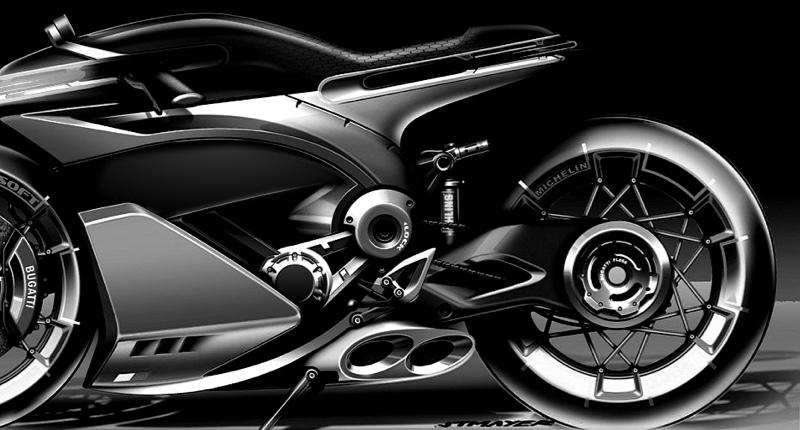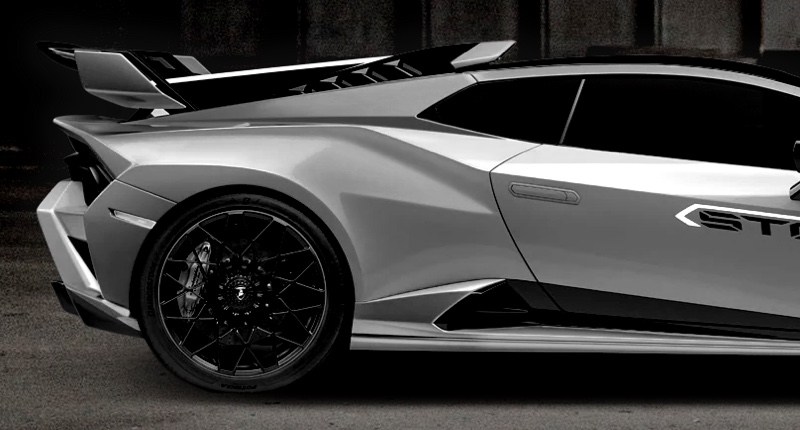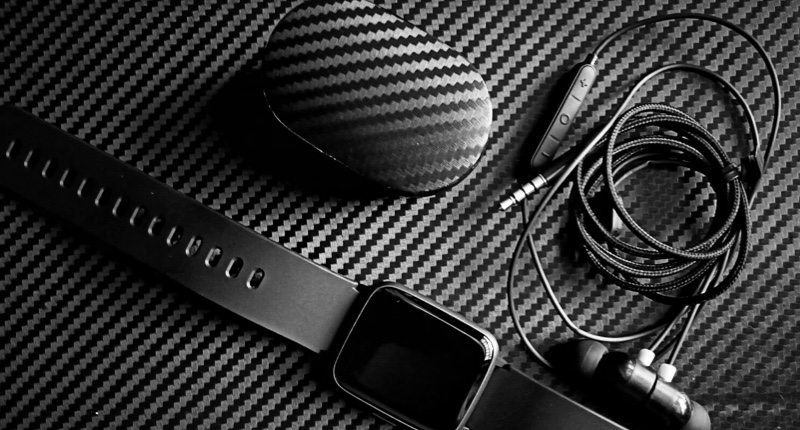Sanding Carbon Fiber: A Comprehensive Guide for Industry Professionals
While sanding carbon fiber is feasible for surface preparation, repairs and finishing, it requires specific techniques and safety measures. This guide details the proper tools and grit selection (e.g., 400–2000+ for clear coats), as well as essential precautions such as wearing respiratory protection (N95/P100) and wet sanding to minimize hazardous dust. Read on to learn how to maintain structural integrity and achieve a professional finish—a crucial consideration for industry buyers evaluating component quality and longevity.
- Can You Sand Carbon Fiber, and Why Would You?
- What Are the Recommended Tools and Grit Sequences for Effective Sanding?
- What Are the Critical Safety Precautions to Take When Sanding Carbon Fiber?
- How Does Sanding Impact the Structural Integrity and Longevity of Carbon Fiber Parts?
- What Are Common Mistakes to Avoid and Best Practices for a Professional Finish?
Can You Sand Carbon Fiber, and Why Would You?
Yes, carbon fiber composites can be sanded, though it's typically the surrounding resin matrix (epoxy, polyester, or vinyl ester) or clear coat that is being abraded, not the carbon fibers themselves. Sanding is primarily performed for several professional reasons:- Surface Preparation: Before painting, clear coating, or applying decals, sanding creates a mechanical key for better adhesion. This is crucial for achieving durable, high-quality finishes.
- Defect Removal: Minor surface imperfections, scratches, or resin drips can be carefully sanded down to create a smooth, blemish-free surface.
- Repair and Blending: In composite repair, sanding is essential for feathering out damaged areas, preparing surfaces for new laminate layers, and blending repaired sections seamlessly with existing structures.
- Aesthetic Finishing: For parts requiring a matte finish or specific texture, controlled sanding can achieve the desired look.
What Are the Recommended Tools and Grit Sequences for Effective Sanding?
Selecting the right tools and grit progression is paramount to avoid damage and achieve a superior finish.- Sandpaper Type: Silicon carbide sandpaper is highly recommended for composites due to its sharpness and durability, especially when wet sanding. Aluminum oxide can also be used but may dull faster.
- Grit Progression: Start with a coarser grit only if significant material removal or shaping is needed (e.g., 220-320 grit for heavy repairs or shaping excess resin). For general surface preparation or blending, begin with medium grits like 400-600. Progress incrementally to finer grits (800, 1000, 1500, 2000+) for a progressively smoother finish, especially before clear coating or polishing. Skipping grits can lead to deeper scratches that are difficult to remove.
- Wet Sanding: Always opt for wet sanding when possible. This significantly reduces airborne dust, keeps the abrasive clean, prevents heat buildup (which can scorch resin), and provides a smoother finish. Use water with a few drops of dish soap as a lubricant.
- Sanding Tools: For flat surfaces, a sanding block ensures even pressure. Orbital sanders (with dust extraction if dry sanding) can be used for larger areas, but hand sanding offers more control for intricate shapes and critical areas. Avoid excessive pressure, which can generate heat and damage the resin.
What Are the Critical Safety Precautions to Take When Sanding Carbon Fiber?
Sanding carbon fiber composites generates fine dust that poses significant health risks. This dust consists of microscopic carbon fibers and resin particles, which can be irritants and potential health hazards if inhaled or come into contact with skin/eyes.- Respiratory Protection: A minimum of an N95 or P100 respirator is essential to prevent inhalation of fine particles. For prolonged or heavy sanding, a powered air-purifying respirator (PAPR) offers superior protection.
- Eye Protection: Safety glasses or goggles are mandatory to protect eyes from airborne dust.
- Skin Protection: Wear gloves (nitrile or similar) and long-sleeved clothing to prevent skin irritation from resin dust. Some individuals may develop dermatitis upon repeated exposure.
- Ventilation and Cleanup: Work in a well-ventilated area, preferably with local exhaust ventilation (LEV) or dust extraction systems. Use a HEPA-filtered vacuum cleaner for cleanup; never use compressed air, which can disperse dust. Dispose of waste properly according to local regulations.
- Wet Sanding Advantage: As mentioned, wet sanding dramatically reduces airborne dust, making it a safer option.
How Does Sanding Impact the Structural Integrity and Longevity of Carbon Fiber Parts?
The impact of sanding on structural integrity largely depends on the depth and aggressiveness of the sanding process.- Resin Matrix Protection: The resin matrix encases the carbon fibers, transferring loads between them and protecting them from environmental damage. Oversanding can remove too much resin, exposing the fibers. Exposed fibers can fray, absorb moisture, or become points of stress concentration, compromising the part's mechanical properties.
- Fiber Damage: If sanding reaches and damages the carbon fibers themselves, it can significantly reduce the part's strength and stiffness, potentially leading to premature failure. This is particularly critical in structural components.
- UV Degradation: Carbon fibers are susceptible to UV degradation if not protected by a clear coat or paint. Sanding that removes this protective layer without replacement will shorten the part's lifespan when exposed to sunlight.
- Post-Sanding Protection: After sanding, especially for repair or aesthetic purposes, applying a new clear coat or paint system is vital. This restores UV protection, seals the surface, and maintains the part's original design integrity and longevity. For procurement, specifying the required post-sanding protective layers is crucial for durability.
What Are Common Mistakes to Avoid and Best Practices for a Professional Finish?
Achieving a professional finish requires attention to detail and avoiding common pitfalls:- Avoid Aggressive Grit: Do not start with overly coarse sandpaper unless absolutely necessary for bulk material removal. Aggressive grits can quickly remove too much material and leave deep scratches that are hard to eliminate.
- Even Pressure: Apply consistent, light pressure. Uneven pressure can create dips or high spots, leading to an inconsistent finish.
- Cross-Hatch Pattern: When moving from one grit to the next, sand in a cross-hatch pattern relative to the previous grit's direction. This makes it easier to see and remove the previous, coarser scratches.
- Thorough Cleaning: After each grit change, thoroughly clean the surface to remove all dust and debris. Residual coarse particles can embed themselves and create new scratches when moving to finer grits.
- Inspect Frequently: Regularly inspect the surface under good lighting conditions to identify imperfections or remaining scratches.
- Understanding Resin Systems: Different resins (epoxy, vinyl ester, polyester) have varying hardness and sanding characteristics. Epoxies are generally harder and more resistant to heat than polyesters. Adjust your technique accordingly.
- Final Protection: Always finish with a protective clear coat or paint to seal the surface, protect the fibers, and enhance aesthetics. This is a non-negotiable step for long-term performance.

Aprilia Tuono V4 2021 new arrivals.

Best 10 Carbon Fiber Parts Manufacturers in 2026: Industry Leaders Ranked

Supreem carbon Auto part new arrivals

Supreem carbon new carbon fiber engine cover for GR Yaris.

Supreem carbon Auto part new arrivals!

What are the Applications of Carbon Fiber in BMW Cars
For Products
Supreem Carbon parts produce by 100% carbon?
Yes,all products are made from full carbon with dry carbon.
For Order Delivery
How to choose the mode of transportation?
We use official shipment like Fedex,UPS,DHL and so on. Also customer can arrange delivery by themselves.
For Facotry
How many monthly production capacity of the factory?
The average monthly production capacity reach 3000 pieces. With the equipment upgrade, it will be increased over 4000 pieces per month.
When is Supreem carbon founded?
Our company formally established in early 2017.
For Customized Service
How long does the customized products order take?
This depends on the complexity and mold production cycle of the product. The first sample will be ready in 2-3 weeks after mold finished.

Chevrolet Corvette C8 Carbon Fiber Engine Cover Replacement

Ducati Monster 937 Carbon Fiber Engine Protect Cover

Yamaha R1 Carbon Fiber Airbox Tank Cover
Introducing the Supreem Carbon Fiber Airbox Tank Cover for Yamaha R1. Crafted with precision and expertise, this tank cover is designed to elevate the performance and aesthetics of your R1. Made from high-quality carbon fiber, this tank cover is not only lightweight but also incredibly durable, providing optimal protection for your motorcycle.

Porsche GT3RS Carbon Fiber Full Sets Aerodynamics Kits
Let’s Bring Your Carbon Fiber Ideas to Life
Have a question or inquiry about our carbon fiber composite products? Leave us a message here, and our team will get back to you promptly.
Whether you're interested in custom orders, technical specifications, or partnership opportunities, we're here to assist you.
Please fill out the fields above with your name, email address, and message.
© 2024 Supreem Carbon All Rights Reserved.





Facebook
Pinterest
LinkedIn
Instagram